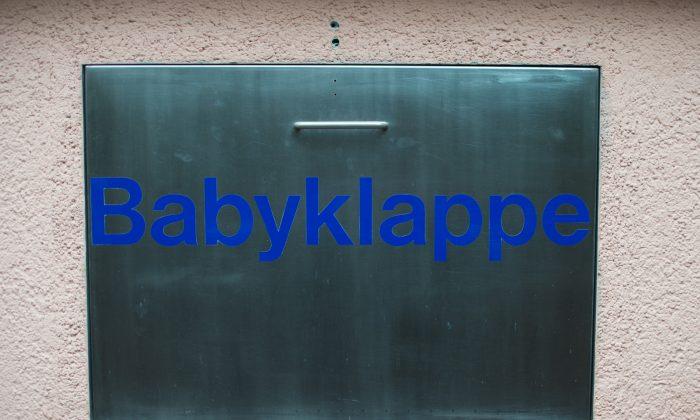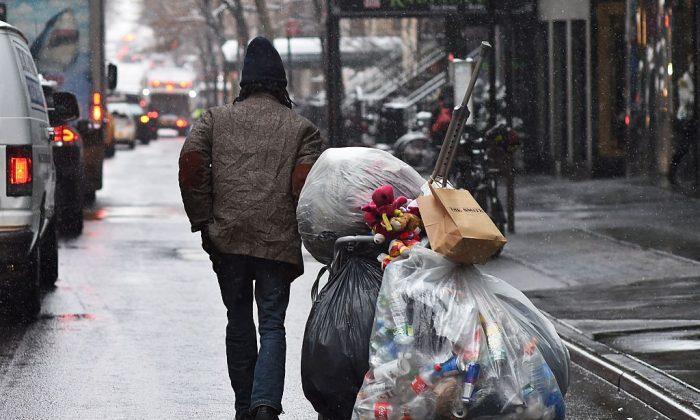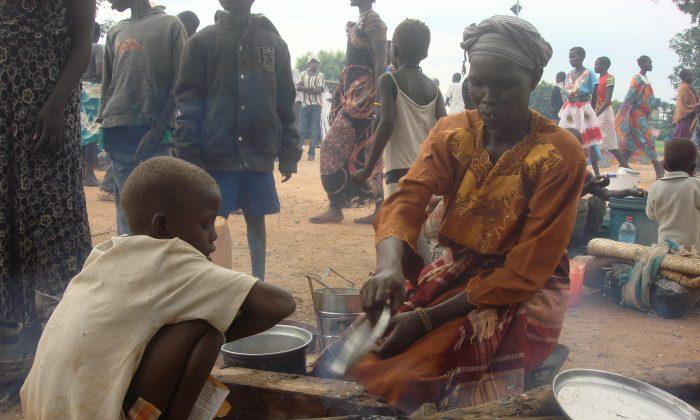The information that a baby abandonment center (known as “baby hatch”) in Guangzhou City had been closed off temporarily because the staff couldn’t care for the large number of children being dropped off there provoked considerable concern in the city’s welfare community. According to Xu Jiu, the director of one of the city’s welfare centers, 262 babies had been dropped off since the station opened on Jan. 28. Since 2011, approximately 25 such centers have been set up on the mainland across 10 provinces in China.
Baby hatch centers are places where people (usually mothers) can bring their children, usually newborn, and leave them anonymously in a safe place to be cared for. These centers have been in existence in one form or another for many centuries. In 1198 the first “foundling wheels” were used in Italy. The name refers to the fact that mothers placed the child in a cylinder, which was turned around so that the baby went inside a church while the mother rang a bell to alert caretakers.
Although foundling wheels stopped being used in the late 19th century, a modern form, the baby hatch (called “baby box” in the Czech Republic or “window of life” in Poland) was introduced again in 1952. In its modern form it is used in many countries, such as in Germany, where there are around 100 hatches, and in Pakistan, where there are over 300 in use today.
In the past, babies were abandoned mainly because they were born out of wedlock. Today, baby hatches are used by mothers unable to care for their own children, because they don’t want to divulge their identity, or because the child is sick. In India and Pakistan, they are used to provide an alternative to female infanticide.
Some experts believe that the number of such places, known officially in China as “baby safety islands,” will increase dramatically in the future. Today, almost the same number of girls and boys are left in these places. The creation of those centers has provoked concern, because many people believe that they will encourage more parents to abandon their children, a notion disputed by people such as Fuxian Yi, a population expert at the University of Wisconsin–Madison.
In some cases, abandoned children have serious birth defects, and parents are unable to care for them because of the high costs involved. It is estimated that at least 900,000 children are born annually with a congenital anomaly in China. According to government officials, baby hatches are needed because many of the abandoned children have disabilities in need of immediate medical attention.
Although China has had a birth-defect monitoring system since 1986, and has prenatal care and examination and neonatal disease screening programs, they are not universally used throughout the country. At the same time, compulsory premarital checkups have been eliminated and, as a result, have fallen from 80 percent in 2008 to 41 percent in 2011, even though they are provided for free in many cases. As a result, many couples take fewer precautions against the possibility of having babies with birth defects.
Although it is not possible to totally eliminate the possibility of having children with birth defects since many of them are due to genetic causes, women can take a series of precautions to lower the chance of having them. Women can increase their chances of having healthy babies by adopting healthy behaviors and managing health conditions before becoming pregnant.
For example, it is known that if a woman has enough folic acid, which is a B vitamin, in her body at least one month before and during pregnancy, this can help prevent major birth defects in her baby. Women should also avoid alcohol at any time during pregnancy, since alcohol passes to her baby through the umbilical cord.
Pregnant women should also stop smoking and avoid using “street” drugs, and let their doctors know about any medication they are taking. At the same time, pregnant women should also prevent infections, maintain a healthy weight, keep diabetes under control, and have all required vaccinations.
For some experts, the number of abandoned children in China is the result of deficiencies in the country’s welfare system, particularly for children born with illnesses or disabilities. In that regard, they insist on the importance for the country to have a unified and responsive welfare system adequate to the needs of the population.
To ease families’ burden, there should also be a national insurance program for all birth defects and hereditary conditions. This policy will also lower the number of mothers who abandon their children because they cannot afford the high costs of medical treatment.
In addition, the government could consider relaxing the terms for adopting children, particularly those that are physically challenged. By adopting a wide range set of measures, the government could better address what could quickly become a serious problem regarding abandoned children.
César Chelala, M.D., Ph.D., has carried out health-related missions in over 50 countries worldwide. He is also a co-winner of an Overseas Press Club of America award.
China Should Be Better Prepared for ‘Baby Hatch’ Children
The information that a baby abandonment center (known as “baby hatch”) in Guangzhou City had been closed off temporarily because the staff couldn’t care for the large number of children being dropped off there provoked considerable concern in the city’s welfare community. According to Xu Jiu, the director of one of the city’s welfare centers, 262 babies had been dropped off since the station opened on Jan. 28. Since 2011, approximately 25 such centers have been set up on the mainland across 10 provinces in China.

3/27/2014
Updated: 3/26/2014




Friends Read Free